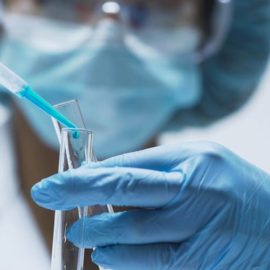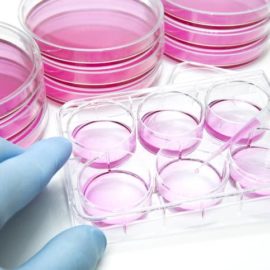The Greek myth of the female figure of Althaea, known for her healing powers, speaks of the continued human beings’ quest for eternal health. Current cutting-edge scientific advancements in healthcare mirror this myth in their efforts for prolonging quality of life.
It can be argued that we are entering an era in the cosmetic field where well-aging will become predominant: as the older consumer segment grows rapidly globally, it’s also one where genuine innovation is demanded to cater to older adults’ evolving and diverse demands. This is the context in which unprecedented scientific advances in anti-aging are targeting cell senescence removal.
What exactly is a senescent cell and how are cutting-edge natural ingredients facilitating its selective removal in skin tissue? Keep reading to find out.
Content
Senolysis: The senescent cell removal process
The term senolysis defines the process of senescent cell removal and describes the efforts aiming at stopping the deleterious accumulation of senescent cells over time. As science and technology are successfully applied to develop increasingly efficient well-aging products, the senescent cell removal stands at the center of health and beauty target biological processes.
But, what is senescence? Briefly put, senescent cells are cells that have entered a state of cell cycle arrest. Although this is part of a natural transition and human aging, the process can also be related to diseases related to age, including cancer or Alzheimer. In the context of cosmetics, the process directly targets skin aging, as they become deleterious for skin tissue when they accumulate. In fact, cellular senescence has important consequences in some critical physiological processes of the skin and is considered one of the most important hallmarks of aging, and one of the reasons why human skin develops certain age-related alterations in elastic fiber morphology, facial wrinkles, and perceived age.
Cellular senescence represents a disabling process that occurs as a response to damage inputs such as oxidative and genotoxic stresses, telomere shortening, DNA injury and mitochondrial dysfunction, among others. This, in turn, results in a series of morphological changes including irreversible growth arrest, resistance to apoptosis and the release of a complex cocktail of inflammatory factors known as the senescence-associated secretory phenotype (SASP).
Normally, this process actually aims at restoring tissue function by stimulating neighboring cells to engage in tissue repair, and by attracting inflammatory cells to eliminate senescent cells. However, in aging processes, damage inputs exceed the repair capacity, which translates into senescent cells accumulating worsening tissue malfunction and also, transforming the healthy cells into senescent cells.
In order to halt this process and remove senescent cells, two pharmaceutical strategies for senescent cell removal had been discovered: senomorphic (when the objective is to suppress the SASP phenotype) and senolytic (when the target is the selective elimination of senescent cells). The latter involves the targeting and destruction of these cells by generating what is called “apoptosis”, also known as programmed cell death.
It’s precisely through the process of senescent cell removal where the most promising well-aging cosmetic formulas are thriving today. In fact, even if cell senescence has been a trending topic in cosmetics for a while now, senolysis represents an innovative mechanism of action breaking new ground for the development of cosmetic ingredients.
The longevity era from a preventative perspective
As we’ve mentioned above, the current moment is one of unprecedented focus for successful well-aging strategies in the cosmetic industry. This opportunity can be illustrated by data, as the global population aged 65+ is expected to grow by 62.5% between 2021 and 2040 to reach 1.3 billion by 2040, according to Euromonitor’s report ‘Innovation and population ageing’. As an affluent and large demographic, this population segment is ready to embrace cosmetic innovations that cater to their needs.
At the same time, the cosmetic market is seeing a shift towards preventative health efforts, which seek to stop harm before it happens, while consumer focus on hyper-efficacy continues growing: 50% US consumers say ‘proven to be effective’ is among the 5 most important claims for them.
All in all, all signs point towards the success of cosmetic products at the intersection of well-aging, science-based, preventative and highly efficient formulas.
Altheostem™: the plant-based ingredient enabling senescent cell removal
Provital’s commitment for advancing cosmetic science has made Altheostem™ possible, a ‘dermohacker’ facilitating biological action towards selective senescent cell removal.
This cosmetic ingredient is effectively able to trigger senolysis in aging skin, generating a significant improvement in the skin’s mechanical, visible and tactile features.
The ingredient has showed vitro efficacy in key areas such as:
- Dose-dependent reduction of the proportion of a known and specific biomarker for senescent cells: beta-galactosidase positive senescent cells.
- Selective decrease in the viability of senescent cells shown by a significant reduction of ATP levels on senescent vs normal fibroblasts.
- While normal fibroblasts remained the same, the treatment of senescent cells with the active increased the apoptosis levels by up to 36%, thus indicating a selective induction of apoptosis for those formerly resistant to it.
- Promotion of the expression of genes involved in ECM remodeling of senescent fibroblasts, showing a clear induction of the genes involved in the formation of the extracellular matrix, including COL1A2, ADAMTS2 (both involved in collagen formation), HAS3 and FBN2 (involved in hyaluronic acid and fibrillin biosynthesis, respectively). At the same time, genes involved in extracellular matrix degradation such as the metalloproteinases MMP7 and MMP9 and the pro-inflammatory factor GM-CFS were strongly repressed.
In vivo efficacy in aging signs has also been observed in areas such as in a healthy glow, in better skin’s capacities for elastic recovery, in less skin sagging and in a smoother and wrinkle-less skin appearance.
All in all, a lab-grown ingredient that builds from the petals of Althea rosea and is able to seize the power of plant stem cells for self-renewal to modulate the mortality of certain damaging human skin cells. As such, it has generated a new biotechnological path to selectively hack skin senescence and enable senescent cell removal.
No comments yet
There are no comments on this post yet.





Leave a comment